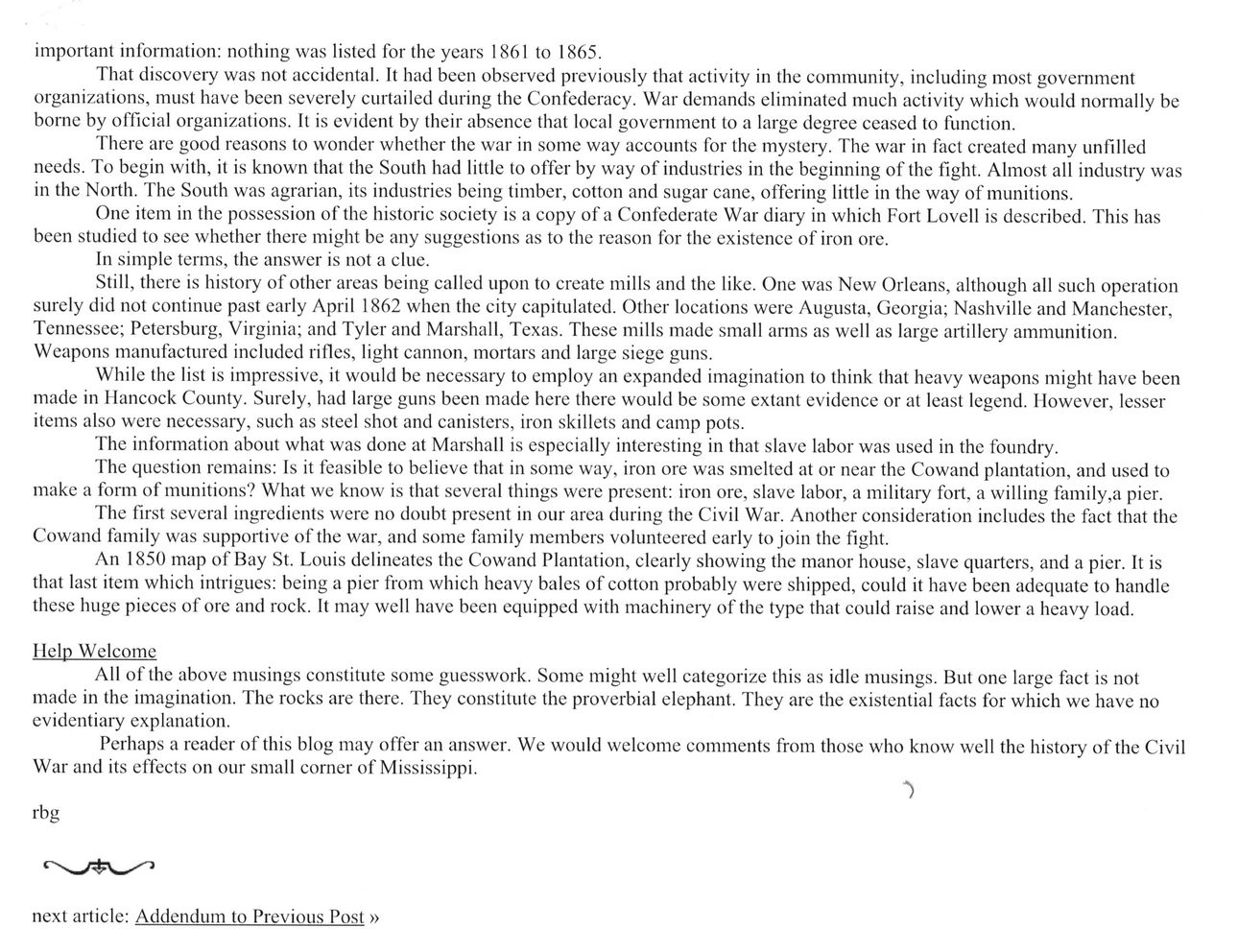This text was obtained via automated optical character recognition.
It has not been edited and may therefore contain several errors.
important information: nothing was listed for the years 1861 to 1865. That discovery was not accidental. It had been observed previously that activity in the community, including most government organizations, must have been severely curtailed during the Confederacy. War demands eliminated much activity which would normally be borne by official organizations. It is evident by their absence that local government to a large degree ceased to function. There are good reasons to wonder whether the war in some way accounts for the mystery. The war in fact created many unfilled needs. To begin with, it is known that the South had little to offer by way of industries in the beginning of the fight. Almost all industry was in the North. The South was agrarian, its industries being timber, cotton and sugar cane, offering little in the way of munitions. One item in the possession of the historic society is a copy of a Confederate War diary in which Fort Lovell is described. This has been studied to see whether there might be any suggestions as to the reason for the existence of iron ore. In simple terms, the answer is not a clue. Still, there is history of other areas being called upon to create mills and the like. One was New Orleans, although all such operation surely did not continue past early April 1862 when the city capitulated. Other locations were Augusta, Georgia; Nashville and Manchester, Tennessee; Petersburg, Virginia; and Tyler and Marshall, Texas. These mills made small arms as well as large artillery ammunition. Weapons manufactured included rifles, light cannon, mortars and large siege guns. While the list is impressive, it would be necessary to employ an expanded imagination to think that heavy weapons might have been made in 1 lancock County. Surely, had large guns been made here there would be some extant evidence or at least legend. I lowever, lesser items also were necessary, such as steel shot and canisters, iron skillets and camp pots. The information about what was done at Marshall is especially interesting in that slave labor was used in the foundry. The question remains: Is it feasible to believe that in some way, iron ore was smelted at or near the Cowand plantation, and used to make a form of munitions? What we know is that several things were present: iron ore, slave labor, a military fort, a willing family,a pier. The first several ingredients were no doubt present in our area during the Civil War. Another consideration includes the fact that the Cowand family was supportive of the war, and some family members volunteered early to join the fight. An 1850 map of Bay St. Louis delineates the Cowand Plantation, clearly showing the manor house, slave quarters, and a pier. It is that last item which intrigues: being a pier from which heavy bales of cotton probably were shipped, could it have been adequate to handle these huge pieccs of ore and rock. It may well have been equipped with machinery of the type that could raise and lower a heavy load. I Ielp Welcome All of the above musings constitute some guesswork. Some might well categorize this as idle musings. But one large fact is not made in the imagination. The rocks are there. They constitute the proverbial elephant. They are the existential facts for which we have no evidentiary explanation. Perhaps a reader of this blog may offer an answer. We would welcome comments from those who know well the history of the Civil War and its effects on our small corner of Mississippi. rbg next article: Addendum to Previous Post »

Iron Ore Iron-Ore-in-South-Mississippi-(2)